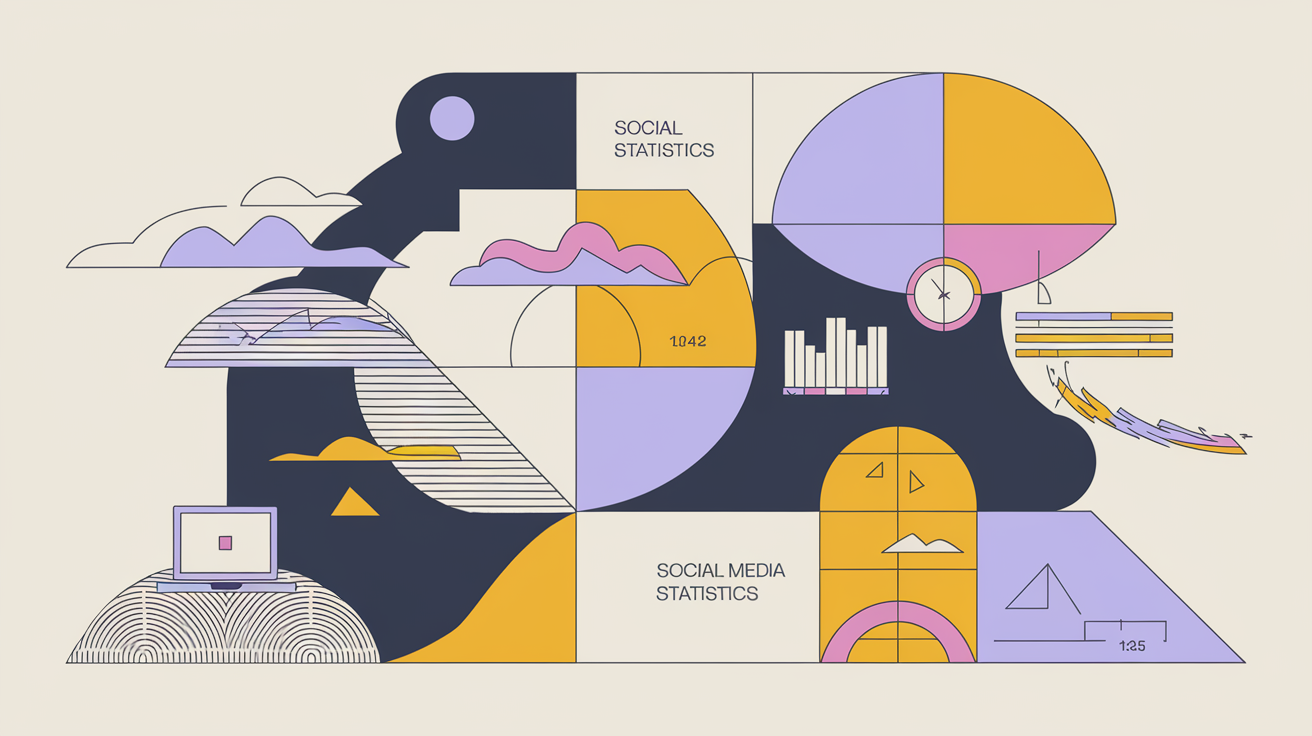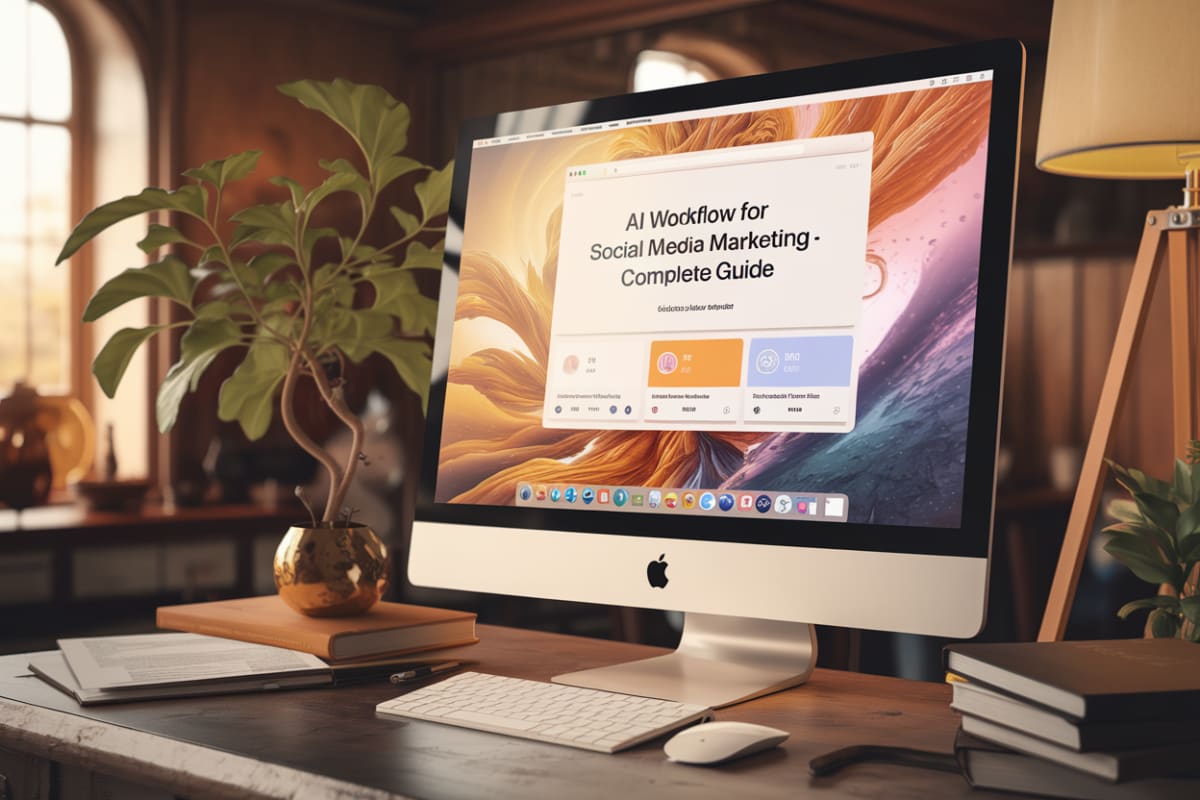Social Media Statistics 2025
What are the latest social media statistics for 2025?
Social Media Users
Projections indicate continued growth in social media usage. In 2024, over 5 billion active social media users exist globally, expected to reach approximately 6 billion by 2028. Brands must prepare to engage this expanding audience effectively.
Social Media Penetration
The global social network penetration rate reached 62.2% in 2024. This trend creates a solid foundation for further growth as we move into 2025.
User Engagement
In 2024, internet users spent an average of 143 minutes per day on social media, a slight decrease from 151 minutes in 2023. Users engage with an average of 6.7 different social networks each month. This highlights the need for marketers to maintain a presence across multiple platforms. The AI Social Media Coordinator from Enrich Labs can help teams manage these interactions efficiently, ensuring consistent brand voice and timely responses.
Demographics and Preferences
The demographics of social media users show a global gender balance: 53.4% male and 46.6% female users. Notably, Generation Alpha shows an 11% year-on-year increase in teens identifying social media as a primary source for discovering brands and products.
Platform Preferences
As of late 2024, Facebook remains the most popular platform among marketers, with 86% reporting its use for marketing efforts. Instagram and LinkedIn follow closely behind. As brands seek to optimize their engagement strategies, the AI Social Media Coordinator stands out—custom-trained on unique brand guidelines, it ensures consistency across platforms.
Emerging Trends
Looking ahead, trends suggest authenticity and personalized content will dominate social media strategies in 2025. The rise of short-form video content continues, with platforms like TikTok and Instagram Reels leading user engagement. Additionally, community-building and niche platforms gain traction, as users seek more personalized experiences online.
While specific statistics for 2025 are not available, these trends and projections inform strategies for the coming year and beyond. For detailed insights, refer to reports from sources like We Are Social and Meltwater, which provide in-depth analyses of social media trends and user behavior.
How many people use social media in 2025?
Projected Global Users
As of 2024, approximately 5.17 billion social media users exist worldwide, representing about 63.82% of the global population. This number is forecasted to grow to 5.42 billion by the end of 2025, driven by increasing internet and smartphone penetration, especially in developing regions.
Regional Statistics
- China leads with over 1.02 billion users, followed by India at 755.47 million and the United States at 302.25 million. By 2025, these numbers will likely rise as platform accessibility improves.
User Behavior Insights
On average, social media users engage with 6.6 platforms and spend around 2 hours and 24 minutes daily on social media. The significant user growth indicates brands need to adapt their strategies to engage a wider audience across multiple platforms. The AI Social Media Coordinator can analyze interactions across these platforms, offering unique customer insights and enhancing engagement.
What is the most popular social media platform in 2025?
Most Popular Platform in 2025
While definitive data on the most popular social media platform in 2025 is not explicitly available, trends from 2024 suggest that Facebook continues to dominate with approximately 3.65 billion monthly active users (MAUs) as of late 2024. This indicates a strong likelihood that Facebook remains a leading platform in 2025. However, Instagram shows significant growth among younger demographics, particularly among U.S. teens, where it was reported as the most used app with 87% monthly usage in late 2024. Source: Buffer, Source: Business Insider.
Emerging Trends
TikTok gains traction, especially among Gen Z users, with significant engagement and marketing potential. It is projected that TikTok will see a rise in advertising revenue, indicating increasing popularity among brands. Source: eMarketer.
Instagram's Features: Instagram enhances its features to attract younger audiences, such as improved messaging capabilities and direct engagement options. Source: Business Insider.
What trends are expected in social media in 2025?
Increasing Role of AI-Powered Influencers
In 2025, AI-powered social media influencers are expected to become more prevalent, potentially overshadowing human influencers. For example, the AI character Lil Miquela has already gained 2.5 million followers, illustrating the blending of reality and virtual influencers. As AI continues to evolve, the line between human and AI-generated content will blur significantly, raising questions about authenticity and engagement in social media marketing. Jeff Bullas.
Shift Towards Prosocial Media
Another significant trend is the emergence of 'prosocial media' platforms, which aim to foster empathetic and inclusive interactions among users. These platforms will incorporate features allowing users to collaboratively add context to misleading information. Initiatives like Twitter's Community Notes have shown promise in combating misinformation and enhancing user engagement, indicating a move towards more responsible social media practices. Wired.
The Creator Economy
The creator economy is projected to continue its growth trajectory, with estimates suggesting it could reach $480 billion by 2027. This trend indicates more individuals and brands will leverage social media for marketing, making it essential for businesses to adapt their strategies to engage with this expanding audience. Forbes.
Decline in Follower Engagement
A prediction dubbed 'The Great Unfollowing' suggests many users will shift their media consumption habits, potentially leading to a decrease in followers for independent journalists and influencers. This shift may stem from content saturation and a growing disinterest in repetitive or low-quality posts. As users seek more meaningful engagement, platforms need to innovate to retain their audience. Nieman Lab.
Focus on Authentic Engagement
Marketers are expected to prioritize authenticity and momentary engagement over traditional long-form narratives. This shift is driven by a decline in trust towards mainstream media, pushing brands to create meaningful connections with their audience. As younger demographics increasingly demand alignment with their values from brands, marketers will need to adapt accordingly. Content Marketing Institute.
How does social media usage vary by age in 2025?
Overview of Age-Based Social Media Usage in 2025
Social media usage trends indicate significant variations across age groups, particularly between younger and older generations. Although specific statistics for 2025 are limited, insights from 2024 provide a foundational understanding.
Gen Z and Millennials
In 2024, Gen Z (ages 18-24) spent an average of six hours and one minute online daily, a noticeable increase from previous years. This demographic predominantly engages with platforms like TikTok, Snapchat, and Instagram, which cater to their preferences for short-form content and social interaction. For instance, 75% of individuals aged 18 to 24 used TikTok, spending about 64 minutes daily on the app. Ofcom.
Gen X and Baby Boomers
As of 2024, Baby Boomers (ages 60-78) gradually increase their online presence but still lag behind younger generations. They are expected to spend 93 minutes daily on social media in 2025, reflecting a 43.1% increase from 2015 levels. Facebook remains their preferred platform, with Boomers making up 29% of weekly users compared to just 9% for TikTok. Advanced Television.
Key Trends and Changes
- Declining Interest in Traditional Platforms: Younger audiences increasingly move away from traditional platforms like Facebook, associating them with older users while gravitating towards newer platforms emphasizing visual content and interaction.
- Increased Digital Consumption Among Older Adults: The transition of Baby Boomers to digital media necessitates a reevaluation of marketing strategies, as their spending habits and media consumption evolve.
- Platform Preferences: Gen Z favors platforms that allow for creative expression and community building, such as TikTok, while older generations prefer platforms that facilitate connection with family and friends, like Facebook.
What percentage of businesses use social media for marketing in 2025?
Current Trends in Social Media Marketing Usage
According to a report by LocaliQ, less than half of small businesses invest in social media advertising in 2025. This statistic highlights a significant gap, especially considering the growing importance of social media platforms for customer engagement and brand visibility. Specifically, around 80% of small businesses utilizing social media for marketing focus their efforts primarily on Facebook, followed by Instagram and LinkedIn.
Implications for Businesses
The underinvestment in social media advertising among small businesses suggests that many miss opportunities to reach potential customers where they spend considerable online time. As platforms like TikTok become increasingly popular as search engines, businesses will need to adapt their marketing strategies to include these evolving digital landscapes. The AI Social Media Coordinator offers a solution, automating social media interactions and providing actionable insights to drive growth.
What are the key demographics of social media users in 2025?
Current User Statistics
As of 2024, social media usage continues to grow, with over 5.22 billion people actively using social media platforms globally. This represents approximately 63.8% of the world's total population, with projections suggesting this figure could reach 6 billion by 2028. Source: DataReportal.
Gender Distribution
The global gender balance on social media platforms shows that 53.4% of users are male, while 46.6% are female. This relatively balanced demographic indicates that social media appeals to both genders, but marketers should consider these proportions when crafting targeted content. Source: Jeff Bullas.
Age Breakdown
In the United States, Gen Z and millennials dominate social media as of 2024, with 69.2 million and 62.5 million users respectively. This is followed by Gen X at 50.2 million and baby boomers at 35.5 million users, indicating a gradual decline in the latter's engagement with social media. Source: eMarketer.
Platform Preferences
Different social media platforms attract different demographics. For instance, Instagram and Snapchat have a nearly equal split with female users, while X (formerly Twitter) has a higher male user base (60.3%). This indicates that brands targeting specific genders may want to adjust their strategies accordingly. Source: Jeff Bullas.
Usage Trends
The primary motivations for social media use include staying connected with friends and family (56%), followed by using the platforms to fill spare time (38%). Notably, there's a rising trend among Gen Alpha users who increasingly use social media for brand discovery, as evidenced by an 11% year-on-year increase in teens citing shopping as a reason for their social media engagement. Source: GWI.
Conclusion
The social media landscape continues to expand rapidly, with projections indicating a steady increase in users year on year. For businesses looking to enhance their social media strategies, the AI Social Media Coordinator from Enrich Labs provides an efficient solution to manage interactions, maintain brand consistency, and gain actionable insights. Learn more about it here.




